|
Mentors & Teams
| Team 1: Lowell Anderson |
lra@alum.mit.edu |
|
More info... |
| Team 3: Yolanda Fan |
yolanda@mit.edu |
410-858-3784 |
More info... |
| Team 2: Todd Harland-White |
todd@alum.mit.edu |
410-757-8020 |
More info... |
| Team 5: Bob Gurnitz |
rgurnitz@alum.mit.edu |
508 627 3882 |
More info... |
| Team 7: Hal Gustin |
hlgustin@structint.com |
720-320-6722 |
More info... |
| Team 6: Christopher Barnett |
BarnettCJ@pbworld.com |
|
More info... |
Team 5: Allan Kent
|
alrkent@comcast.net |
508-381-0582 |
More info... |
| Team 4: Alfredo Kniazzeh |
alfredok@alum.mit.edu |
781-891-9937 |
More info... |
| Team 5: Kathy Hess |
kmhess@mit.edu |
617.918.1487 |
More info... |
| Team 4: Mike Leis |
Mleis@alum.mit.edu |
|
More info... |
| Team 7: Keith MacKay |
quisp@alum.mit.edu |
617.695.1935 |
More info... |
| Team 1: Stephen Estes-Smargiassi |
Stephen.Estes-Smargiassi@mwra.state.ma.us |
|
More info... |
| Team 6: Guillermo Vicens |
VicensGJ@cdm.com |
617-452-6245 |
More info... |
| Team 2: Dr. Jorge Phillips |
jp@alum.mit.edu |
919-395-1580 |
More info... |
| Team 3: Peter Ralston |
pralston@alum.mit.edu |
|
More info... |
| Team 8: Ken Stewart |
kstewart@alum.mit.edu |
|
More info... |
| Team 8: Johnny Yang |
jtyang@sloan.mit.edu |
781-810-2100
|
More info... |
| Team 2: Jeff Walker |
walker.jeff.d@gmail.com |
|
More info... |
| Team 1: Sheldon W. Buck |
sheldon.buck@comcast.net |
781-235-9585
|
More info... |
| Team 6: John Stenard |
jstenard@imagine-one.com |
703.379.4900 |
More info... |
 Lowell Anderson
Lowell Anderson
lra@alum.mit.edu
Manager, Shoshone Municipal Pipeline
MIT year: 1959 (Electrical Engineering)
Beginning in 1988 I oversaw the construction of 70+ miles of transmission pipeline and a 16.5 MGD water treatment plant. As construction came to completion in 1991 I hired a crew and since that time I have overseen the operation of same as well as upgrades to keep things up to date. We supply water to six municipalities and to eight rural water districts.
I have followed in the news various water problems and suits for many years. I am originally from Riverton, Wyoming, which is surrounded by the Wind River Indian Reservation. The two tribes on the reservation instituted a lawsuit over water that took many years to settle.
I live in the area served by the Cody Canal Irrigation District and I have been involved in their meetings and adjudication of water rights. I have been involved in petitions to the Wyoming Board of Control concerning the transfer of water rights. Here in Wyoming we are at the headwaters of the rivers leaving the state.
This year I attended the Wyoming Water Law Institute.
|
Back to
the top |
 Yolanda
Fan Yolanda
Fan
yolanda@mit.edu 410-858-4784
Occupation: Partner at a Real Estate Investment / Property Management
Start-up
MIT year: 2002
Education: B.S. Chemical Engineering, B.S. Biology
After graduating from MIT, Yolanda worked at MIT's Technology
Licensing Office before ultimately starting a real estate investment
company in Baltimore, MD, with another MIT alum. She enjoys creative
problem solving and is particularly interested in this year's
topic.
This is Yolanda's third year as a 12.000 mentor -- some of her
other MIT alumni activities include leadership in her class,
the Club of Baltimore, and fund raising.
Since she lives in Towson, MD so most communication will have
to be by email or phone.
|
Sheldon W. Buck
sheldon.buck @comcast.net Phone: 781-235-9585
Occupation: aeronautical engineer
MIT year: 1958
Education: Bachelors
I was a mentor for Mission in 2000, 2002, 2003, 2004, 2005, and 2006, and 2007.
I am an Aero/Astro grad class of 1958. Worked at the MIT Instrumentation Laboratory 1957 to 1973 followed by The Charles Stark Draper Laboratory 1973 to 2000 when I retired. I was assigned to the Earth and Planetary Science Department for 5 years 1968 to 1973 working with Prof. Frank Press and Prof. Nafi Toksoz. I was Technical Director of the Lunar Traverse Gravimeter experiment which flew on Apollo 17 and was a member of the lunar surface EVA team at mission control during the flight.
Designed stable platforms for inertial guidance systems. Designed seismic monitoring systems for earthquakes and underground explosions. Designed gravimeters for lunar exploration. Designed special purpose instrumentation for submarines and oceanography. |
Back to
the top |
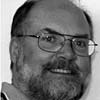 Hal
Gustin Hal
Gustin
hlgustin@structint.com 720-320-6722 website: www.structint.com
Occupation: Engineer
MIT year: 1973
Education: Masters
This is my third year as an alumni mentor for 12.000. I’m
really looking forward to this year in particular, with its focus
on the Colorado River system, since that’s local to me.
I received my Bachelor’s and Masters in course 2, in 1975 and 1982, respectively.
I’m an engineering consultant with specialization in the areas of fracture
mechanics, stress analysis, and power plant systems (especially nuclear), with
supporting interests in welding engineering, materials, and probably a bunch
of other things. I work for Structural Integrity Associates (www.structint.com)
in the Denver area.
I promptly respond to e-mails, often even at 3 am. |
Back to
the top |
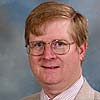 Todd
Harland-White Todd
Harland-White
410-757-8020 (home) todd@alum.mit.edu
410-260-5180 (office) todd.harland-white@ngc.com
Todd Harland-White's career since MIT (XIII-C, '76) has involved
designing and building manned and unmanned systems operating in
the deep sea for Northrop Grumman Undersea Systems, where he is
now Chief Architect. Projects have included design of deepsea research
submersibles and mini-subs, participation in teams designing new
submarine and surface ship classes, developing underwater robotic
systems, and working with optical and acoustic sensors and sensor
networks for probing and mapping the underwater space. All of these
efforts have been highly inter-disciplinary not only in the breadth
of technical issues but also in the politics and budgeting required
to initiate and complete the projects - as is typical of most real
problems.
This is Todd's seventh tour of duty as a 12.000 mentor, having served
for Missions 2005 through 2010. Todd also serves as an MIT Educational
Counselor possibly responsible for some of you being there at MIT
to begin with!
Todd has managed to visit one or two of the classes, but usually
he will have to do everything long distance from Annapolis MD via
email and website review. |
Back to the
top |
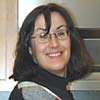 Kathy
Hess Kathy
Hess
kmhess @mit.edu 617.225.8106
McCormick Housemaster, MIT
Environmental Scientist
Office of Inspector General
U.S. Environmental Protection Agency
BS, Geology, Stanford University
MS, Engineering Geology, Stanford University
additional graduate work in Environmental Engineering, MIT
I evaluate environmental programs at US EPA for the Inspector General.
My
recent evaluations include Superfund sites, combined sewer overflows,
and human
impacts on the Chesapeake Bay.
Prior to joining the EPA OIG in 2004, I worked over 20 years as
a scientist at
the US Geological Survey. Technical areas I worked in included
fate and
transport of contaminants in ground water, interactions between
ground and
surface waters, field sampling techniques, ground water supply,
and numerical
modeling. I served as the supervisor for the Ground Water Studies
Section and
as Ground-Water Specialist for the Massachusetts and Rhode Island
Water Science
Center. |
Back to
the top |
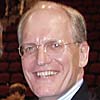 Christopher Barnett Christopher Barnett
BarnettCJ@pbworld.com
Senior Engineering Manager, Parsons Brinckerhoff, Inc.
Education: 1977, BS, Mechanical Engineering, 1980 MS, Technology and Policy
Christopher Barnett is a senior project/construction manager. Most recently he served on PBís Panama Canal Program Advisory Services team, leading a review of the contract documents for design and construction of the new locks at Miraflores and Gat²n. estimated value US$2.8 billion. He advised on Employerís Requirements for the design-build contract documents, particular conditions of contract for this FIDIC contract, and contractor pre-qualification criteria. PB was contracted as a program advisory consultant in a high-level multi-year advisory role that assisted the Panama Canal Authority in formulating the framework needed to make key decisions on the expansion of the Canal.
Until recently he was a member of the Bechtel/Parsons Brinckerhoff team assisting the Massachusetts Turnpike Authority with the management, design and construction of the Central Artery/Tunnel Project, a multibillion-dollar highway project to replace an aging 6-lane viaduct with a new 8- to 10-lane tunnel carrying Interstate 93 under the City of Boston, and construct 3-mile tunnel extension of Interstate 90, including two immersed-tube harbor channel crossings.
He was previously Manager of Right-of-Way Assessment and Remediation and Materials Disposal Services on the Central Artery/Tunnel Project.
Before his Central Artery/Tunnel Project assignment, Chris was Technical Manager of Massachusetts Water Resources Authority, in Boston, Massachusetts. He was responsible for technical oversight, regulatory support and day-to-day coordination between engineering, construction and procurement divisions for metropolitan water and sewer utility engaged in design and construction of a $6 billion wastewater treatment facilities program.
Chris also served as a consultant to the Massachusetts Department of Public Utilities, Electric Power Division, where he managed the Stateís program to regulate utility recovery of fuel and purchased power costs through consumer rates, based on performance of companiesí generating units, directed systematic reviews of nuclear and fossil plant outage management, and developed a system for setting targets for power station availability and thermal performance.
|
Back to the
top |
 Allan
Kent Allan
Kent
ARKent @alum.mit.edu 508-381-0582
BS(physics), MS-EE(systems)
My first inside experience with water processing was as an ‘operator’,
the lowly person who collects samples, does simple chemical and
physical tests at various points in the water purification process,
and adjusts treatment settings under the direction of a ‘senior
operator’. This was at a water works which turned Missouri
River water into high-quality drinking water at up to 4 MGD (million
gallons per day) for the Greater Omaha (Nebraska) community of
400,000 people and for local industry. Missouri River water can
test at 100,000 ppm turbidity (10% mud) after an upstream rain
storm.
Before that, I watched the local water supply utility clean, line
the pipes, and adjust the water pH to 8.0 to prevent future corrosion
(in the 1950s) with the same process that was finally used to deal
with metropolitan Boston water pipes in the 1990s.
I have also upgraded and maintained a farm drinking water system
for over 20 years.
Otherwise, I have designed a human centrifuge system using (among
other things) a 2 MWe electromechanical drive system and a system
on a chip with an I/O rate of 10 Gb/s per port. Although mostly
retired, I have recently taught a 7th grade home schooler chemistry
and help 7th and 10th grade public school science teachers. I have
considerable experience dealing with customers, clients, and various
levels of government. |
Back to
the top |
Alfredo
Kniazzeh
alfredok @alum.mit.edu 781-891-9937
Occupation: scientist, retired
MIT year: 1959
Education: Doctorate
35 yrs product development at Polaroid: Mechanical Eng, Physics,
Chem. Eng, Materials, 13 patents. Previously NASA and US Army.
Travels: Oaxaca, Baltic capitals, Turkey, Costa Rica, W Europe,
B Virgin Islands, Bogota. Visited Nawlinz. Hobbies: ballroom dancing,
Arg. tango, biking, choir singing, cooking.
|
Back to
the top |
Mike
Leis
'61 BSEE, MSEE
Mleis @alum.mit.edu
I have just retired as a fellow from the hard-drive industry, having
worked for Digital, Quantum and Maxtor for about 35 years. I was
a project engineer, electronics architect, director, lecturer and
coach. I have a background in analog electronics, signal processing,
logic, storage architecture, servos and have more than 25 patents. |
Back to
the top |
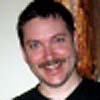 Keith
MacKay 617.543.5644 fax: 617.695.1935 Keith
MacKay 617.543.5644 fax: 617.695.1935
email: quisp @alum.mit.edu
website: http://www.villagesoft.com
Occupation: Managing Director, Software Company
MIT year: 1997
Education: Bachelors
Originally class of 1990, I took several years off to explore
various interests, including: participating in a band, consulting
to various corporations and the U.S. Dept. of Energy, traveling
in Great Britain, Japan, and throughout the U.S., spending a semester
in a political science program at the University of London, writing,
etc. When I decided to return and finish my MIT degree, I first
circled everything in the Course Catalog that seemed interesting,
and Brain and Cognitive Sciences was the best fit...so I wound
up graduating with a B.S. in B&CS. While at MIT before my
hiatus, I was in a fraternity (served as Steward, Alumni Chair,
President), on the gymnastics team, and in the Logarhythms. After
my break, I was working fulltime and going to school fulltime.
Much of my professional life has involved exploration of systems
problems of one sort or another. I worked in a restaurant in
high school, and was always fascinated by how it was necessary
for all of the individual components to be functioning for things
to run smoothly. During my time off from MIT, I spent time at
Lawrence Livermore National Lab in the Earth Sciences department,
developing expert systems software to analyze seismic events
to help decide if events were earthquakes or underground nuclear
tests. I have modeled industries (offshore oil-drilling industry,
aluminum smelters) and various financial systems (options models,
investment simulations, etc.) for customers including Harvard
Business School, Mercer Management Consulting, and many others.
My current role as Managing Director of Village Software requires
keeping a lot of balls in the air, and organizational systems
thinking is a key skill to make this (almost) manageable <g>.
I spent last year serving as President of the MIT Club of Boston,
which required learning an entirely different set of technical,
political, and management skills--and integrating information
received from many quarters to develop plans that would best
serve the 17,000+ MIT alumni in the Greater Boston area.
These experiences have all contributed to my diverse worldview,
which I have found is often as important to problem-solving
as specific domain knowledge. I believe that this is especially
true when approaching complicated problems that are as-yet unsolved
(after all, if domain knowledge alone was enough, current subject-matter
experts would have the problem--whatever it is--licked). Instead,
complex problems require creative thinking, productive collaboration
with many parties (to increase the knowledgebase and idea pool
as large as possible), a realistic understanding of the political
realities of the situation, and flexibility enough to adapt
the solution as new information is received.
I'm looking forward to working with all of you as we explore
this important problem.
|
Back to the
top |
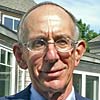 Robert Gurnitz Robert Gurnitz
Bob has been a Mentor for 12.000 for the past six years. He also assists Sam Bowring in working with and providing support for the other mentors. Bob is President of the MIT Club of Southwest Florida. Additionally he is on the Board of Directors of Habitat for Humanity of Collier County (Florida). His hobbies include astronomy and sailing.
He is a Chemical Engineer by education (S.B., S.M., Ph.D., MIT). Bob briefly taught at MIT prior to going into the Aerospace Industry. He then spent a year in the President’s Executive Interchange Program in Washington working at the Department of Health, Education, and Welfare. Upon returning to Rockwell International, he subsequently held various positions leading to becoming President of their Passenger Car Components Business. Upon leaving Rockwell, he become President of Bethlehem Steel’s Structural Components Business. His subsequent positions included President of Webcraft Technologies, Chairman and CEO of Northwestern Steel and Wire, and Chairman of Envirosource. |
Back to
the top |
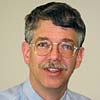 Stephen Estes-Smargiassi
Stephen Estes-Smargiassi
Director of Planning, Massachusetts Water Resources Authority
Stephen.Estes-Smargiassi@mwra.state.ma.us
Occupation: planner and engineer
MIT year: 1979 (Civil Engineering)
Education: CEE (MIT), Planning (Harvard)
Stephen Estes-Smargiassi is a planner and an engineer. Throughout his career, he has focused on gathering and managing multi-disciplinary teams to design and communicate complex projects to the public. He has a Bachelors of Civil Engineering from Massachusetts Institute of Technology and a Masters in City and Regional Planning from Harvard University. He lives in Boston where the streets donít follow old cowpaths, although they seem to, loves maps, and has two kids who also love maps. And he proudly drinks tap water, at least in Boston.
In his 20 years at the MWRA, the regional wholesale water and wastewater provider for the Boston metro area, he has lead or participated in all MWRA drinking water quality initiatives, including treatment decisions for corrosion, microbial and disinfection byproducts control; and outreach and coordination with local and state health officials. He is active with the AWWA Research Foundation, is a QualServe peer review team leader, and has actively participated in water quality regulatory development activities regionally and nationally.
As part of his responsibilities he managed the MWRA's successful demand management programs, reducing water demand by over 100 mgd; initiated its GIS system; and coordinated protection planning studies for the 400 square mile Quabbin, Ware River and Wachusett reservoir watersheds, as well as about 40 other smaller supply systems in the metropolitan area. His group is currently producing an integrated master plan to prioritize and schedule improvements to the regionís water and sewer systems.
He has overseen MWRA's collaborative efforts to understand and communicate the risks of lead in drinking water since 1993, and has been active in regional and national efforts to review and revise the Lead and Copper Rule.
He developed the briefing materials used by MWRA's Board of Directors to make
the treatment technology decision for the metropolitan Boston water system and
then participated in the successful defense of that decision in federal court.
He is responsible for producing and distributing MWRA's annual water quality
report to over 800,000 households, as well as monthly public reports, and using
those
opportunities to reinforce the bridges built over the past decade to the public
health community. He is currently coordinating drinking water quality and public
health outcome research to understand and evaluate the recently completed treatment
improvements.
|
Back to
the top |
Dr.
Jorge Phillips jp@alum.mit.edu
919-395-1580
MIT year: 1972
Education: Doctorate
Dr. Phillips holds a B.Sc. degree from MIT in Computer Science as well
as two M.Sc. and Ph.D degrees in Electrical Engineering and Computer
Science from Stanford University in the areas of computer systems,
artificial intelligence and management. A successful entrepreneur for over 20 years in
Silicon Valley, the East Coast and overseas, he has had a lifelong
interest since his MIT years in complex social and physical systems,
appropriate technology, politics and policy making, the environment
and social development. Dr. Phillips has held Cabinet level government
positions in Colombia and diplomatic positions in Europe, as well as
academic appointments in the US, South America and Europe. He is a
founding member of the Children's Museum in Bogot·, Colombia and of
the International Center of Physics in Colombia, and member of the
Eta Kappa Nu and Sigma Xi national honorary societies to
which he was inducted as an undergraduate at MIT. He is a patented
inventor with registered software patents in the US, Japan and Europe,
and lives in the Research Triangle area in North Carolina,
where he is currently involved in high tech startups, management consulting,
academia and other entrepreneurial efforts.
|
Back to
the top |
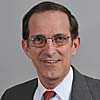 Guillermo Vicens
Guillermo Vicens
VicensGJ@cdm.com Phone: 617-452-6245
Occupation: Chief Operating Officer, CDM consulting and engineering divisions
CDM website: http://www.cdm.com
MIT year: B.S, 1970, M.S., 1972, PhD, 1974
Education: PhD, P.E.
The work of Mission 2012 fits Dr. Vicens background (water resources planning) as well as the work of his firm (http://www.cdm.com). He has been in management positions at CDM (a consulting, engineering, construction, and operations firm delivering exceptional service to public and private clients worldwide) in the last decade.
As a senior vice president, Dr. Vicens is responsible for a broad range of activities at CDM where he provides oversight and direction to professional and technical staff in the drinking water, wastewater, and water resources fields. He has managed water resources teams tasked with developing and applying computer models and database management systems to environmental engineering problems. As a senior vice president and project manager, Dr. Vicens coordinates and supervises studies involving water quality management, physical oceanography, coastal engineering, and water resources. He is also a technical advisor on stochastic and statistical problems, and the use of computer models in environmental studies, particularly in a permitting and regulatory framework.
Previously, Dr. Vincens worked for the Massachusetts Water Resources Authority (MWRA), as the officer-in-charge for the design/construction services for the 405-mgd Walnut Hill Water Treatment Plant. He also managed the research efforts and technical support to the MWRAís efforts to secure a waiver from filtration for this facility. As officer in charge for all of CDMís work for the MWRA over a 10 year period, he was responsible for the design of the rehabilitation of the Weston Aqueduct Main No. 4 (WASM4), as well as the WASM1 and WASM2 pipelines, the development and implementation of a new hydraulic model of the Authorityís transmission system, and the design of a new SCADA system for the wastewater transport facilities and interceptor system. He was also the project manager for the Wachusett Reservoir Treatment Plant environmental impact report (EIR)/conceptual design, which preceded the Walnut Hill WTP design.
He also worked for the South Essex Sewering District (Salem, MA), as the officer-in-charge of the program to upgrade the Districtís facilities to secondary treatment over a ten year period. He also was worked for the Geographic Information System for Norumbega Reservoir as officer-in-charge for the GIS implementation study, development of protection plans for local water supply sources, GIS mapping of water distribution system facilities, and environmental impact statement (EIS) and preliminary design of covered storage for Norumbega Reservoir. His additional experience includes work as He served as task manager for siting studies for the wastewater treatment and disposal facilities plan and EIR for New Bedford, Massachusetts.
Dr. Vicens was formerly an assistant professor in the water resources division of the civil engineering department at MIT. He was also research assistant and co-principal investigator on research efforts into the use of simulation models in water resources problems. While at MIT, he participated in two studies of Boston Harbor and the constraints on development of the islands due to combined sewer overflows water quality problems. He has taught short courses on the use of models for riverine and coastal flood studies.
For over 8 years, Dr. Vicens was a member and served as chairman of the North Andover, Massachusetts Conservation Commission, which monitors and regulates development of wetland areas in the town. He has been selected for inclusion in Who's Who in Engineering by the American Association of Engineering Societies. |
Back to the
top |
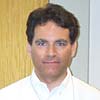 Peter Ralston Peter Ralston
Ralston@alum.mit.edu
Occupation: Project Manager, Environmental Data, Massachusetts Water Resources Department
MIT year: 1992
Education: Bachelor's (Whitman College), Masters in Urban Studies and Planning, (MIT)
I lived in Portland, Oregon while in high school and attended and graduated from
Whitman College in the state of Washington, so I'm acquainted with the culture,
terrain, and climate out that way. Although it's been now 26 years since I lived
there, some things haven't changed very much -- as you note, water has always
been a source of concern in the American West, and now population pressures have
increased demand for fresh water, so concern is (or should be) greater than in
the past.
After graduation from Whitman, I worked at Common Cause, a public interest lobby
in Washington, DC, so I'm pretty familiar with advocacy politics. I did computer
work, not direct advocacy, while there. Still, the organization was small enough
that in a sense everybody participated in lobbying, as the leadership made sure
that all staff and volunteers were fully informed of developments on the agenda
issues of campaign finance reform, government ethics, and tax reform, among others,
as lobbying efforts progressed.
As a Masters student at the Department of Urban Studies and Planning, I tried
to bring together my interests in computing and environmental planning, something
the faculty in different parts of the Department weren't quite ready to support
as much as I would have liked. (I think things are better now.) Still, I liked
and still like the challenge of bringing together the philosophical, values part
of environmental planning with the more technical requirements of computing.
I've found that information management provides a very practical link between
these two activities, because it usually makes no sense at all to collect†data
unless you know what you intend to do with it. So, institutional means and ends
are very much tied together in information management.
I did my thesis on water conservation at MIT in hopes of tackling a practical project that might actually do some good for the Institute. I came up with some indexes for water usage by type of space (office space, lab space, residential space) on campus that may or may not have given some useful information to the Facilities staff. Of far greater importance to me, I learned some very basic things from a liberal arts kind of perspective about utilities data for infrastructure that bore fruit a few years after I began work at MWRA.
I've worked at MWRA since I graduated from MIT in 1992. I started in the Environmental
Quality Department by providing technical assistance for an Oracle database that
holds records about the health of water, sediments, and fish in Boston Harbor,
harbor tributaries, and Massachusetts Bay. Some of my time was given to bureaucratic
politics in order to get scientists in the department adequate computers and
software so that they could do a better job of evaluating the data that they
collected. Computing infrastructure at the Authority was†kind of primitive at
that time. Eventually, my job included some work in summary internal reporting
on water quality in the harbor. After six years, I moved into a position in Waterworks
Operations, where I did more work on reporting, this time internally and externally,
concerning drinking water quality. This position kind of bridged operational
work with policy work on the fresh water side of the organization. After four
years of that, I moved back to the Environmental Quality Department, where I've
spent more time doing database programming than reporting, although recently
I've been involved in some planning efforts led by the Massachusetts Ocean Partnership
that concern data management for information about Massachusetts open waters.
This work has required me to read some of the literature about sustainability,†adaptive
management, and ecosystem-based management -- chiefly some articles by C. S.
Holling and Carl Walters, although I am now turning to some books by Holling,
as well as Peter Rogers' introductory text on sustainable development.
I guess that throughout I've been concerned to try to make data about water quality as accessible and comprehensible as possible, true to my Common Cause training about openness in democratic government. I also try to make things simple. Sometimes I even get that right.
My latest venture has been to return to school part-time while remaining at MWRA
as a part-time employee. I'm attending BU's School of Theology in order to learn
more about -- and, I hope, develop -- some thoughts concerning ecological ethics
in the context of the relationship(s) between religion and science. So far, this
has involved taking†one course on social ethics and another specifically on ecological
ethics. In the social ethics class, I worked with two other students to prepare
a presentation on water rights -- not legal water rights only, but also water
as a human right. We concluded that access to water was a human right, and that
water was not primarily to be considered a commodity, but recognized in a general
way that sometimes delivery of water by regulated private businesses may be more
efficient and effective than supply by government organizations. Since then,
I've worked to gain more background in theology as against ethics, this time
with an interest in learning about Christian theological attitudes toward the
natural world as grounding for ecological ethics. (I was pleasantly surprised,
and sometimes astonished, to learn that theological resources in this area are
much more rich than I expected, so I have good prospects over time for developing
some useful intellectual work that will back up my planning practice.)
The (maybe too ambitious) goal is to bring three things together -- theological ethics concerning the environment, urban environmental planning, and efficient management of water quality data -- in order to do a sound job as a city planning professional. I have a lot still to learn and to do if these things are going to pay off in practical ways in my capacity at MWRA.
|
Back to
the top |
 Kenneth Stewart Kenneth Stewart
kstewart@alum.mit.edu
Occupation: Chief Scientist, South Florida Water Management District
MIT year: 1988 (Ocean Engineering)
Dr. Kenneth Stewart works for the South Florida Water Management District (SFWMD, or District) where his primary activities are in the architecture and systems engineering of a distributed instrumentation, communications, and control infrastructure for monitoring and moving [fresh] water. This covers about 18,000 square miles and comprises: more than 1,000 remote data-acquisition and control computers, more than 15,000 sensors and actuators, and multiple supervisory control and data acquisition (SCADA) systems at central and distributed locations. He says that his current focus and expertise are on the engineering and technical side, but that heís driven by mission objectives. For the District these are: water supply, flood control, water quality, and restoration of natural systems. (These often compete, as well as their ìstakeholders,î which helps to explain why the District has about 50 staff attorneys to handle litigation.)
My MIT degree and earlier background are in Oceanographic Engineering; I was at the Woods Hole Oceanographic Institution before coming to the SFWMD.
|
Back to
the top |
 Johnny
Yang Johnny
Yang
jtyang @sloan.mit.edu 781-810-2100
Class of 2004, SB, Course 15
Johnny was one of the first guinea pigs to participate in 12.000:
Solving Complex Problems. As a student in Mission 2004 (Mars),
he was a member of the "Mission Control" team, and later took
part in writing and editing the mission's final paper. Because
he loved 12.000 so much, he joined the staff for the class, serving
as a Undergraduate Teaching Fellow (UTF) for Mission 2005 (Ocean)
and Mission 2006 (Amazon). Due to class conflicts, Johnny was
not able to return as a UTF for Mission 2007 (Alaska); however,
the powers that be snuck him in as an alumni mentor.
After graduating with a Course 15 degree in 2004, Johnny has returned
to be a mentor for Mission 2009 (Tsunami), Mission 2010 (Ocean),
and now returns again as an alumni mentor for Mission 2011 (Oceans).
He currently works for an early-stage software company in Waltham,
MA.
Personally, Johnny enjoys traveling (to the extent his pocketbook
allows), reading (anything and everything under the sun), and
"wining and dining." He looks forward to working with his team
and the entire class as a whole. |
Back to
the top |
 Jeff Walker Jeff Walker
walker.jeff.d@gmail.com
Occupation: Water Resources Engineer, CDM
MIT year: 2007 (Civil Engineering)
I am currently a resources engineer at CDM near Kendall Square (Cambridge). My
background is in water quality and water resources systems modeling. I'm currently
working on watershed management projects and river water quality around New England,
water systems operations in south Florida, water quality modeling of a lake in
Egypt, and many other areas that might be of interest to this year's project
in
Mission.
|
Back to
the top |
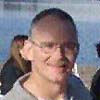 John
Stenard John
Stenard
BS, Course II, 1980;MS, Course XIII - 1988
I had the honor of serving our country for twenty-one years as a US Naval Officer,
and during that time developed, repaired, and upgraded a plethora of shipboard
machinery systems, including desalination plants based upon steam distillation,
solar distillation, reverse osmosis, and flash/recompression. It is sometimes
overlooked that in the middle of the ocean, there is even less fresh water available
than in the middle of the desert.
While the sea can be purified into clean, potable water, presently, it takes
a lot of energy to do so, and the price of energy is ever increasing. Finding
low-cost, environmentally-friendly, politically-acceptable approaches to manage,
use, purify, and reclaim fresh water will be critical to mankind’s future.
Otherwise, we may find ourselves having to trade one critical resource (energy)
for an absolutely essential resource (fresh water).
This will be my first year as a mentor in Mission 12.000, and I look forward
to it greatly. I am impressed by its boldness of vision and scope. If we can
succeed in developing workable approaches that work in the beautiful yet unforgivingly
arid Great Southwest, it is likely that we can export those concepts to any place
in the world.
On a personal note to the students – go out for a sport! Especially while
you are Freshmen on Pass/NR, explore that aspect of life at MIT. Let’s
face it – no one comes to MIT to play sports - we all came here to get
top-notch technical educations. Each of us is highly intelligent, and has studied
hard our whole lives, and has achieved top grades and top test scores. But you
will find that as tough as it was to get admitted to MIT, getting through MIT
is even harder. There are literally people who regularly tool 120hrs/wk, and
while we all have to tool like that sometimes, if you get your life organized,
you should be able to get good grades and a bachelor’s degree in four years
by tooling on the order of 60hrs/wk. This leaves enough time to do a varsity
sport, and it is worth doing so. At our 25th reunion three years ago, almost
all of us had played some sport, and we agreed that while it made life harder
in some ways, it also made it much more enjoyable and enriching. |
Back to
the top |
|









